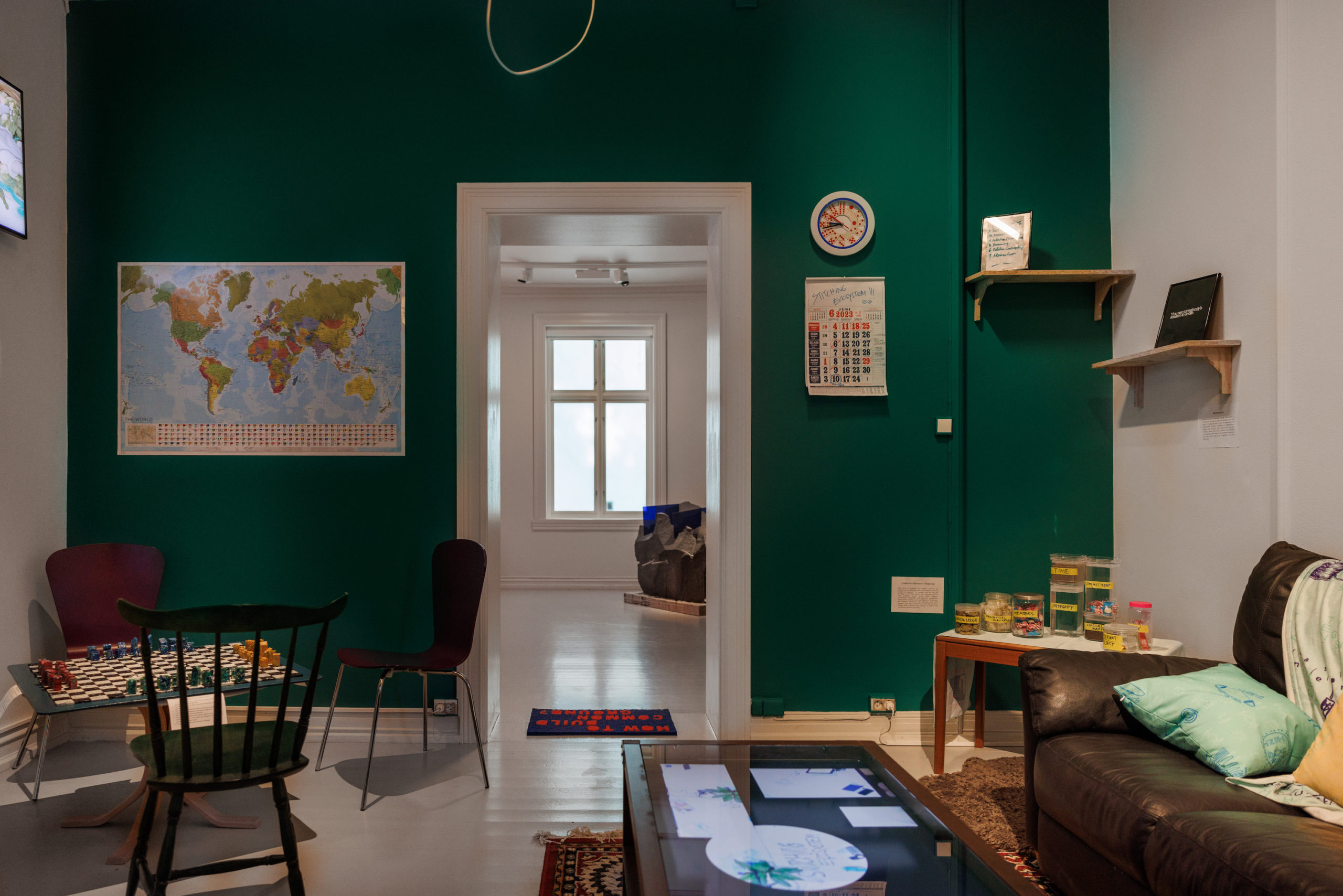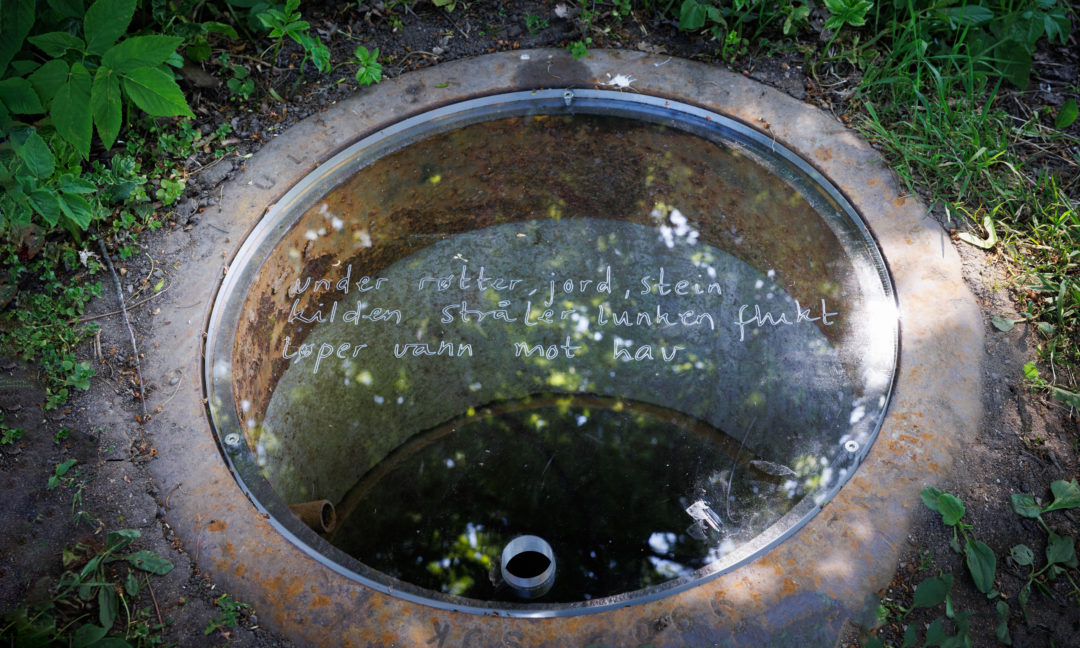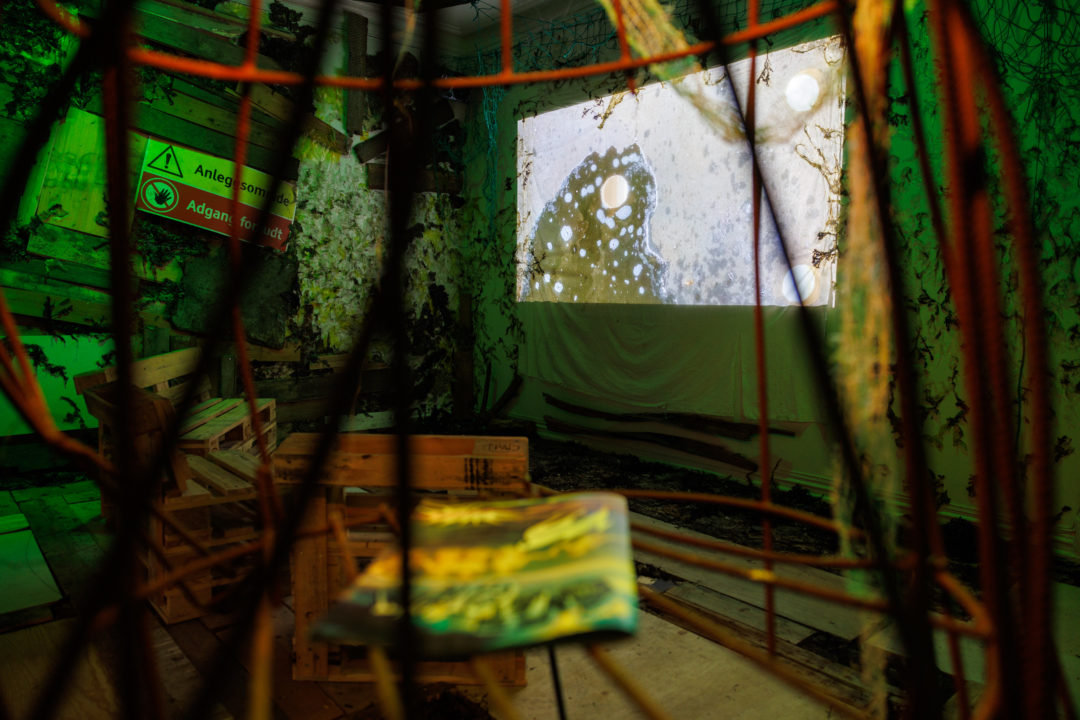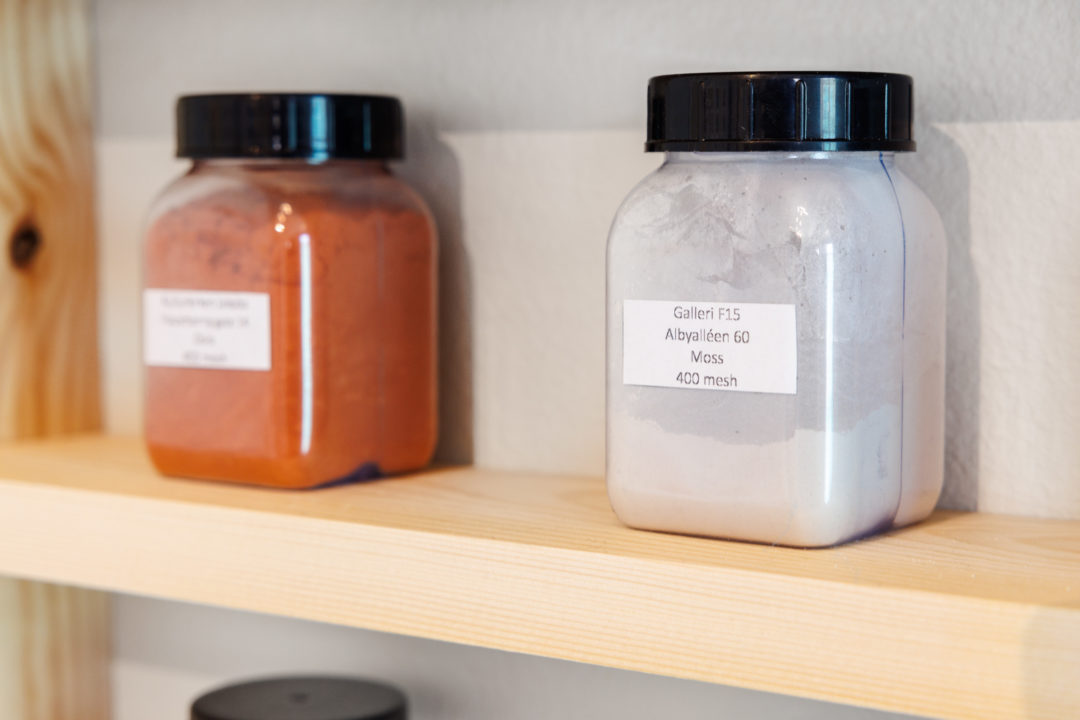Momentum 12 at Moss

Momentum 12
12th Nordic Biennale of Contemporary Art, Moss, Galleri F15
Nestling at the end of the Oslo fjord, the town of Moss had long been home to the Momentum biennial before it decided to move to the Galleri F15, allée d’Alby, in Moss, close to the fjord and right in the middle of a protected area, a reserve of biodiversity and an island of greenery in a Norway already largely untouched by the ravages of invasive urbanisation and industrialisation; its five million inhabitants living in an area the size of Italy, 70% of which is covered in forest.
Now in its twelfth year, the Nordic Biennial team decided to take a step away from the individualisation of curators and the uniqueness of a theme – usually the hallmark of a biennial – by inviting Tenthaus, a curatorial collective whose geometry varies according to the project. This twelfth biennial was largely influenced by the many features that define the form and operation of this collective. “Together as to gather”, the title of the 2023 edition, placed the desire to gather at the heart of the collective’s concerns. What might at first appear to be an obvious idea – bringing together artists, curators, visitors and so on for a biennial – turned out to be infinitely more complex than its title suggested, with this first edition in the wake of the Covid-19 pandemic bearing the scars of the recent confinement and the desire to overcome the trauma that this dramatic health episode had generated.

Unlike traditional biennales, which deploy a statement that is intended to branch out and be translated into as many artistic variants, and which most of the time function as illustrations of a unifying principle, ‘Together as to gather’ wanted to put in place, at least on paper, a genuine project for the inclusivity of the various players taking part in the event: artists, of course, but also designers, publishers, newspapers, run spaces, not to mention – and this was absolutely unprecedented – other biennales, as well as art schools close to the locality. There was, however, an important nuance to the notion of inclusivity, since in this case the collective’s aim was to distance itself from the classic approach of simply asserting a catch-all slogan. For Tenthaus, inclusivity usually means integrating and absorbing avant-garde positions in such a way as to remove any utopian, revolutionary or simply disruptive dimension, in the same way as conceptual movements are recuperated and neutralised by the museum institution. To remedy this state of affairs, Tenthaus advocated setting up a performative, evolving assembly that would dissolve once the highlights of the biennial gatherings were over.
A biennial that is not pyramidal and is based on a principle of polyphony does not prevent themes and directions from emerging, themes that are, to say the least, unexpected, such as listening, non-knowledge (which could perhaps be likened to Jacques Rancière’s theory of the ignorant master) and, finally, dreams as the essential dimension and driving force behind any utopian approach. It’s hard to get a clear idea of the collective’s first curatorial event – which took place just before the opening of the biennial, at the P1 mobile residency platform hosted by the art school in Lier, a few kilometres south of Oslo, If not for the fact that the projects of the artists in residence presented a huge diversity of approaches and media (if we can still talk about media), ranging from the composition of cello scores (Wei Ting Tseng/Zeng) to the creation of biospheres (Shahrzad Malekian). As well as seeking to be genuinely inclusive, the other major challenge of ‘Together as to gather’ was to create a polyphony that was supposed to materialise through the multiplicity of voices carried by the multiplicity of curators working in the collective. Basically, each project was the work of a single curator, and the polyphony generated by this chorus of curators was also supposed to be amplified and augmented by this multiplicity. In fact, it was difficult to get an idea of the general shape of a biennial that was based on a strong performative principle, notably with the production of numerous performances and ex situ creations. Once these highlights were over, what remained was a sum total of individual proposals within the Galleri F15 and its surroundings

If there was a ‘sonic’ atmosphere to be retained from this co-orchestrated symphony, albeit without a conductor, it would be that of marginalised, neglected, resolutely non-dominant narratives, which form the heart of ‘Together as to gather’. We need only cite a few examples to get an idea of this coherence in the absolute formal and media diversity that characterises Momentun 12, following the example of the Czech collective of women artists, WET, who reconstituted an abandoned basement (Cave) in the image of a refuge in which the collective likes to find all the elements of survival sheltered from suspicious eyes. For these 21st-century hobos – who re-enact, a few decades on, the rebellious and casual nomadism of their predecessors, even borrowing their favourite means of transport, the freight train – escaping the surveillance of an increasingly Orwellian society, by employing all the tricks of the resourceful trade, is an unspeakable source of daily joy and exhilaration. In another, less iconoclastic vein, but more directly in line with Tenthaus, where the sharing of practices and knowledge, horizontal learning and perpetual improvisation form the core of its philosophy, the Indonesian collective Gudskul produced a multidirectional and convivial installation right in the middle of Galleri F15. Other proposals were far more astonishing, like that of Thomas Iversen, who is interested in the ‘dandruffs’ on the city’s walls, collecting, filtering and purifying them, giving them a new life as pigment and printing ink. As for the duo Margrethe Pettersen and Line Solberg Dolmen, the porthole-shaped opening they had made in the buried stream that had previously flowed into the Moss fjord allowed the underground circulation of water to be visualised. This intervention, as light as it was relevant, brought home to us the richness of the water networks that human activity has rendered invisible and, at the same time, the absolute necessity of this awareness.

______________________________________________________________________________
Head image : Gudskul, Stitching Ecosystems: GUDHAUS (2023). Installation view from MOMENTUM 12: Together as to gather. Photo: Eivind Lauritzen © 2023 Galleri F 15
- From the issue: 106
- Share: ,
- By the same author: Don't Take It Too Seriously, Hilma af Klint, Playground, Lyon Biennial, Anozero' 24, Coimbra Biennal,
Related articles
Streaming from our eyes
by Gabriela Anco
Don’t Take It Too Seriously
by Patrice Joly
Déborah Bron & Camille Sevez
by Gabriela Anco

